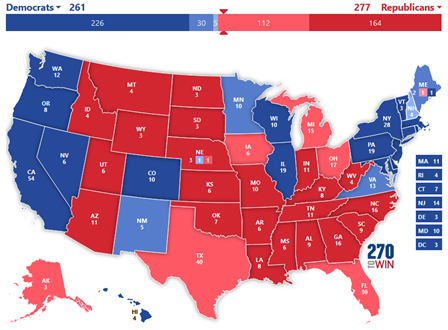The Pulse of American Voters: Insights from the 2024 Presidential Election Survey
Americans are gearing up to make their voices heard as the 2024 Presidential Election approaches. With only six months before ballots are cast, emotions are running high as the nation prepares for one of the most consequential elections in history. ThinkNow tapped into the pulse of likely voters with a nationwide online quantitative survey, uncovering the attitudes and trends shaping this pivotal moment in American democracy.
Download the report here.
A Diverse and Engaged Electorate
The survey, which reached 2,000 Americans and 1,443 likely voters, highlighted a significant level of engagement among various demographic groups. While approximately 80% of Non-Hispanic Whites, Asians, and African Americans expressed their intention to vote, around 70% of Hispanics indicated the same. Despite historical patterns suggesting a potential gap between reported intentions and actual turnout, the demographic differences align closely with past trends.
Not everyone, however, is interested in voting. Among the top explanations cited was the lack of appealing candidates, with Gen Zers exhibiting the lowest interest in politics overall. Furthermore, Baby Boomers and Non-Hispanic Whites were most likely to express dissatisfaction with the current slate of candidates.
Seven States Poised to Determine Election Outcome
One of the survey's most notable findings was the even split among likely voters between Republican and Democratic candidates. In pivotal swing states such as Arizona, Georgia, North Carolina, and Michigan, Republican candidates held a clear edge, potentially tipping the scales in favor of the GOP. If actual voting results were to match current survey results, the Republican party would obtain the 270 electoral votes needed to win the White House.
Interestingly, if Michigan, with its 15 electoral votes, were to vote for the Democrats, they would retain the White House.
TV News Still Rules
When it comes to sourcing information about candidates, traditional media outlets such as TV news and news websites remain the primary channels for likely voters. However, social media and conversations with family and friends also play a significant role, particularly among younger demographics and certain ethnic groups.
Interestingly, the choice of information sources varied across swing states, reflecting each region's diverse media landscapes and campaigning strategies.
The Economy Takes Center Stage
Amidst a myriad of issues, the economy emerged as the foremost concern for likely voters nationwide. Healthcare, social security, and immigration also ranked prominently among voters' priorities, highlighting the multifaceted nature of electoral decision-making. Notably, Republican and Democratic voters exhibited divergent priorities, with the economy, immigration, and a strong military resonating strongly among the former, while healthcare and gun laws were top issues for the latter.
Furthermore, generational disparities on issues were evident, with Millennials prioritizing anti-poverty initiatives and LGBTQ+ rights. Gen Xers and Boomers, on the other hand, focused more on traditional concerns like abortion and national security. Gen Z cares more about student loan repayment than other groups by a wide margin. In swing states, variations in issue salience were observed, reflecting each region's unique socio-political landscapes and demographic compositions and the need to target messaging at the local level.
Challenges to Electoral Confidence
Despite the impending electoral showdown, concerns lingered regarding the fairness and integrity of the electoral process. Alarmingly, less than half of likely voters expressed confidence in the upcoming elections' fairness, with Republican voters exhibiting the highest levels of skepticism. Surprisingly, a substantial proportion of Hispanics voiced doubts about the election's fairness, underscoring the need for enhanced efforts to bolster confidence and transparency in the electoral system.
In Conclusion
As the 2024 Presidential Election approaches, the insights gleaned from ThinkNow's survey offer a snapshot of the diverse perspectives and priorities shaping the American electorate as they currently exist. Public opinion will certainly shift in the coming months, but these findings can provide valuable guidance for candidates, policymakers, and stakeholders navigating the intricacies of current American electorate. Ultimately, democracy is founded on the principles of participation and representation. With an evenly divided electorate, the outcome of the coming election will be determined by the enthusiasm each party can generate.
Download the report here.
